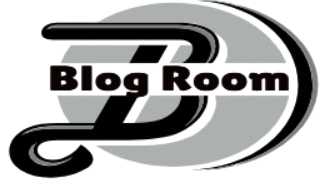Introduction to Business Structures in Lithuania
Navigating the world of business structures in Lithuania can be quite an adventure. With various options available, it’s essential to understand what suits your goals best. Among the most popular forms are Akcine Bendrove and UAB. Each offers unique benefits and challenges that can significantly impact your company’s growth trajectory.
Whether you’re a seasoned entrepreneur or just starting out, grasping these differences is crucial for making informed decisions. Let’s delve into what sets Akcine Bendrove apart from UAB and help you identify which structure aligns with your vision for success in the Lithuanian market.
What is an Akcine Bendrove?
Akcine Bendrove, known as a public limited company in Lithuania, is a popular business structure for larger enterprises. This type of organization allows for the issuance of shares to the public.
The ownership can be distributed among numerous shareholders, providing flexibility and opportunities for investment. Shareholders enjoy limited liability, meaning their financial risk is confined to their investment in shares.
An Akcine Bendrove must comply with specific regulations set by Lithuanian law. These include minimum capital requirements and formal procedures for establishing and operating the company.
Transparency is crucial; regular reporting and auditing are mandatory to maintain investor confidence. This structure attracts both local and foreign investors looking for secure options in the Lithuanian market.
What is a UAB?
A UAB, or “uždaroji akcinė bendrovė,” is a private limited liability company in Lithuania. This business structure is popular among entrepreneurs seeking to limit their personal financial risk while running a business.
Owners of a UAB are protected from liabilities that exceed their contributions to the company’s equity. This means that if the company faces debts, personal assets remain safe.
To establish a UAB, founders must have at least one shareholder and can consist of both individuals and legal entities. The minimum share capital required for formation is relatively low compared to other structures.
UABs offer flexibility in management and operations, allowing for easier decision-making processes. They also benefit from a straightforward registration procedure, making it accessible for new businesses looking to enter the market without extensive bureaucracy.
Differences in Ownership and Management
Ownership and management structures differ significantly between akcine bendrove and UAB.
An akcine bendrove, or public limited company, allows for a broader range of shareholders. This means shares can be traded publicly. As a result, decisions often involve more stakeholders and require adherence to strict regulatory frameworks.
On the other hand, a UAB is typically privately owned with fewer shareholders. Ownership tends to be concentrated among family members or close associates. This structure provides greater flexibility in decision-making since there are fewer voices involved.
Management styles also vary. In an akcine bendrove, management must report to shareholders regularly and follow complex governance rules. Conversely, a UAB’s management can pivot quickly without extensive oversight from many owners.
These differences shape how each type operates daily, influencing everything from strategic direction to responsiveness in dynamic markets.
Tax and Legal Considerations
When choosing between an akcine bendrove and a UAB, tax implications are paramount. An akcine bendrove, or public limited company, typically faces higher taxation. This is due to its corporate structure and potential for larger profits.
On the other hand, a UAB operates as a private limited liability company. It enjoys certain tax benefits that can be advantageous for small businesses or startups. The lower corporate income tax rate often makes it appealing.
Legal considerations also differ significantly between the two structures. An akcine bendrove requires more stringent regulatory compliance and disclosures because of its public nature. In contrast, a UAB has simpler legal requirements, making it easier to manage for new entrepreneurs.
Both entities require proper registration with the state and adherence to Lithuanian laws governing business operations. Understanding these nuances helps in making informed decisions tailored to your specific business needs.
Advantages and Disadvantages of Each Structure
An Akcine Bendrove (AB) offers several advantages. It allows for easier capital accumulation through the sale of shares. This structure also provides limited liability protection, meaning shareholders’ personal assets are safeguarded against company debts.
However, it comes with certain drawbacks. The regulatory requirements are more stringent and can involve higher setup costs. Additionally, an AB must adhere to strict reporting obligations.
On the other hand, a UAB is often simpler to manage and has fewer compliance demands. This makes it attractive for small business owners who want flexibility without overwhelming bureaucracy.
Yet, limitations exist as well. A UAB typically cannot raise funds from public investors like an AB can. Moreover, ownership transfer processes may be less straightforward compared to share transactions in an Akcine Bendrove. Each structure presents unique benefits and challenges that cater to different business needs and objectives.
How to Choose the Right Business Structure for Your Company
Choosing the right business structure is crucial for your company’s success. Start by assessing your goals and vision. Consider how you plan to grow in the future.
Think about liability protection. If you’re concerned about personal assets being at risk, an Akcine Bendrove may provide more security compared to a UAB. This choice can impact your financial safety net significantly.
Next, evaluate management preferences. Do you want a straightforward decision-making process or a complex board setup? An Akcine Bendrove typically involves more formalities than a UAB.
Tax implications are another key factor. Understanding which structure offers better tax benefits can save money in the long run.
Consult with professionals who understand Lithuanian law and market dynamics. Their insights can guide you toward making an informed decision that aligns with both current needs and future aspirations.
Conclusion
When considering the right business structure for your venture in Lithuania, understanding the key differences between an Akcine Bendrove and a UAB is crucial. Each has its unique features that cater to different business needs and objectives.
An Akcine Bendrove, or public limited company, offers opportunities for wider capital generation through share offerings. This makes it appealing for larger businesses aiming to attract significant investment. However, with this potential comes greater regulatory requirements and scrutiny.
On the other hand, a UAB, or private limited liability company, provides a simpler framework suitable for smaller enterprises or startups looking to maintain more control over their operations while enjoying limited liability protection. The administrative burdens are generally lighter compared to an Akcine Bendrove.
Ownership structures also differ significantly; while an Akcine Bendrove allows multiple shareholders including institutional investors, a UAB often involves fewer individuals closely associated with daily management decisions. Tax implications further differentiate these entities as well—each carries distinct benefits based on revenue size and profit distribution strategies.
Selecting between these two options hinges on several factors: growth ambitions, funding needs, operational complexity preferences, and risk tolerance levels of the owners involved. A thorough evaluation will empower entrepreneurs in making informed decisions tailored to their specific circumstances.
Understanding what each structure entails will guide you toward establishing a solid foundation for your business journey in Lithuania’s dynamic marketplace.






